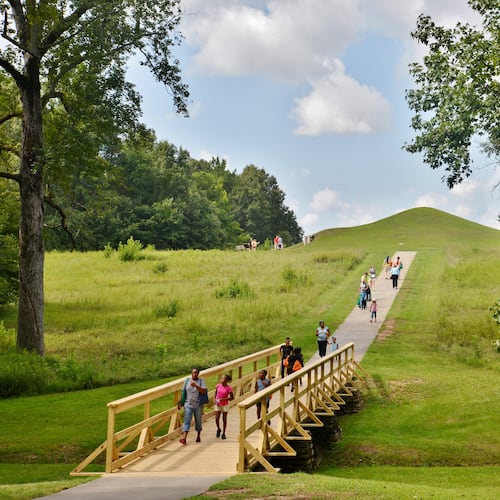From swampy, gator-infested mangrove forests to dramatic and colorful canyons, Georgia is a treasure trove of breathtaking vistas showcasing hundreds of fishing and swimming holes, hiking trails and camping grounds.
The 78-year-old state park system preserves many of these unique landscapes for our enjoyment and protects our natural heritage for future generations.
From Atlanta, you can drive less than 30 minutes and be surrounded by Sweet Water Creek state park, home to rushing rapids, a picturesque reservoir and an abandoned (but equally picturesque) Civil War-era textile mill.
Should we preserve more of our state’s green spaces before they are consumed by concrete and asphalt? Absolutely. However, we are currently witnessing a frightening trend in the opposite direction.
July 1 marked the beginning of a new fiscal year in Georgia and a further tightening of the belt for Georgia’s state parks. After seeing their budget chipped away repeatedly for nearly a decade, the State Parks and Historic Sites division is scrambling to preserve Georgia’s wild places with a 39 percent decrease in funding — a decrease of about $10.6 million.
This means fewer staff for our parks. The Department of Natural Resources has already fired 170 staff — some of them the rangers that could point out a unique bird, warn you about bear sightings or patrol a campground.
It also means further cuts to park resources, ranging from vehicles for park patrol to lawn mowers and paper towels.
Despite valiant efforts from park officials and volunteers, a loss in resources could mean a loss in visitors, thus decreasing the revenue that is so critically needed to support our parks.
Due to looming budget cuts across the board, the fight to maintain funding and protect our state parks is becoming increasingly critical, yet difficult.
But this year’s cut is a special affront to our parks because most other agencies were cut by much less. And for state parks, one year’s slashed budget has the effect of becoming the next year’s baseline from which to extract even more cuts.
Above and beyond the park fees or concession sales, state parks and their visitors are often the economic engines in the rural communities surrounding them.
If you’ve visited a state park recently you’ve probably also visited the grocery store, bait shop or gas station outside the park’s gate. Without the park, these sources of local employment in rural communities would disappear as well.
In the words of the great sportsman, outdoor enthusiast and president, Teddy Roosevelt, “The conservation of natural resources is the fundamental problem. Unless we solve that problem it will avail us little to solve all others.”
Roosevelt’s passion was founding and protecting public lands — his legacy of natural beauty has become one of the defining forces for this country.
This is a legacy we must fight to preserve and protect.
Full funding for Georgia state parks is a necessity — for our local economies, our future generations and our natural heritage.
Jennette Gayer is advocate for Environment Georgia.
About the Author
Keep Reading
The Latest
Featured


